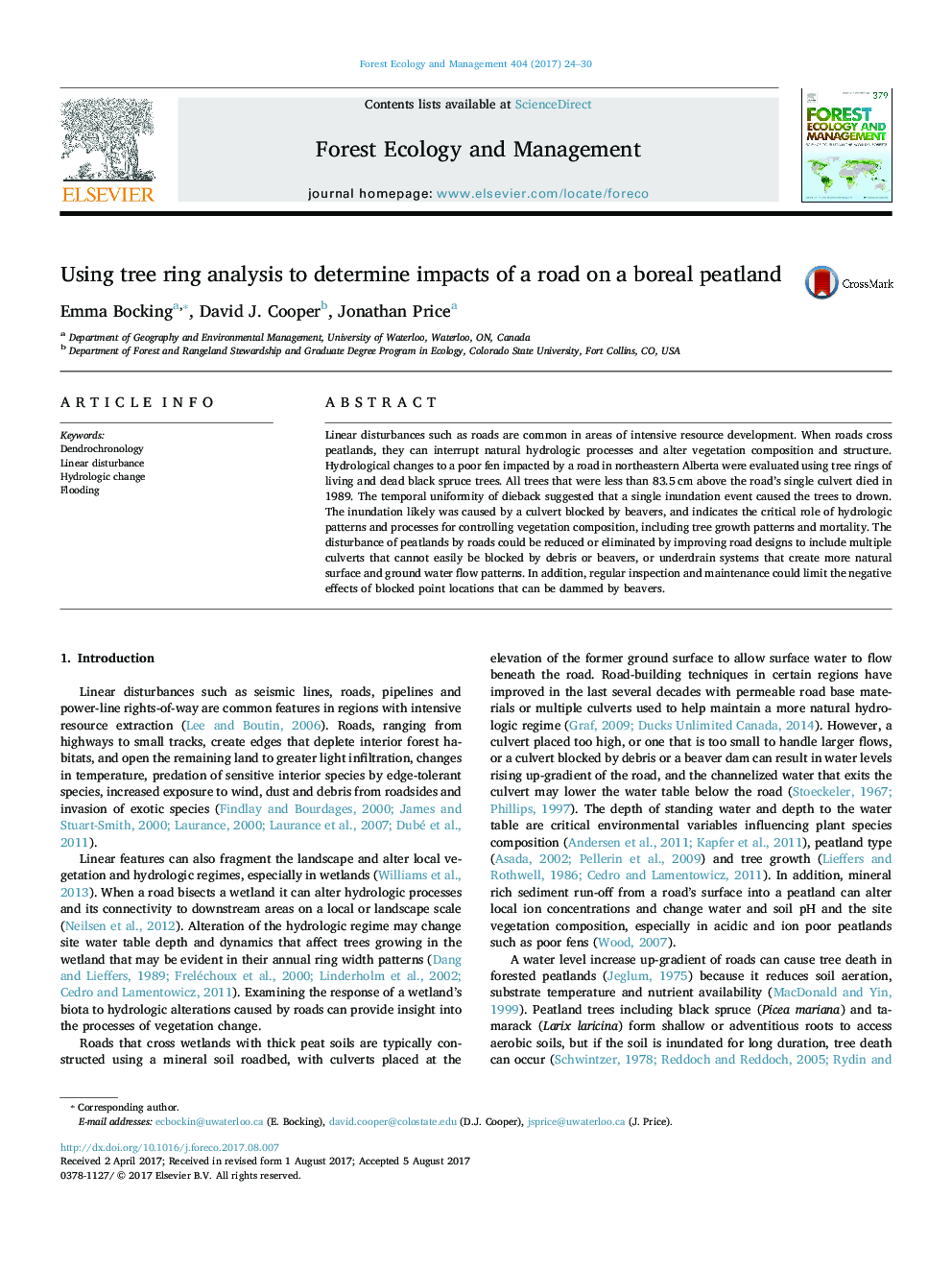| کد مقاله | کد نشریه | سال انتشار | مقاله انگلیسی | نسخه تمام متن |
|---|---|---|---|---|
| 6459136 | 1421354 | 2017 | 7 صفحه PDF | دانلود رایگان |
- Tree rings were used to study hydrological change in a road-impacted peatland.
- All peatland trees at an elevation <83.5Â cm above the single outflow died in 1989.
- Uniformity of tree dieback suggests a single flooding event from a blocked culvert.
- Permeable road materials and multiple culverts can maintain flow through wetlands.
Linear disturbances such as roads are common in areas of intensive resource development. When roads cross peatlands, they can interrupt natural hydrologic processes and alter vegetation composition and structure. Hydrological changes to a poor fen impacted by a road in northeastern Alberta were evaluated using tree rings of living and dead black spruce trees. All trees that were less than 83.5Â cm above the road's single culvert died in 1989. The temporal uniformity of dieback suggested that a single inundation event caused the trees to drown. The inundation likely was caused by a culvert blocked by beavers, and indicates the critical role of hydrologic patterns and processes for controlling vegetation composition, including tree growth patterns and mortality. The disturbance of peatlands by roads could be reduced or eliminated by improving road designs to include multiple culverts that cannot easily be blocked by debris or beavers, or underdrain systems that create more natural surface and ground water flow patterns. In addition, regular inspection and maintenance could limit the negative effects of blocked point locations that can be dammed by beavers.
Journal: Forest Ecology and Management - Volume 404, 15 November 2017, Pages 24-30
